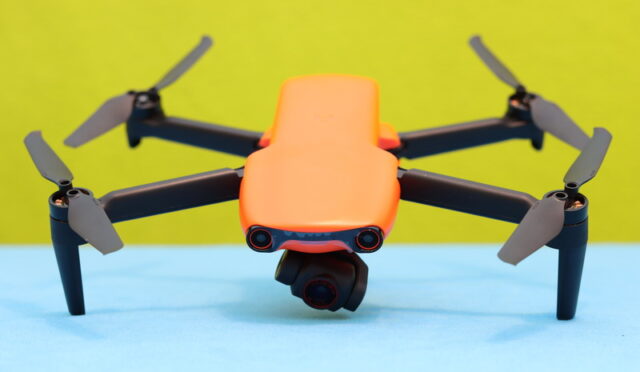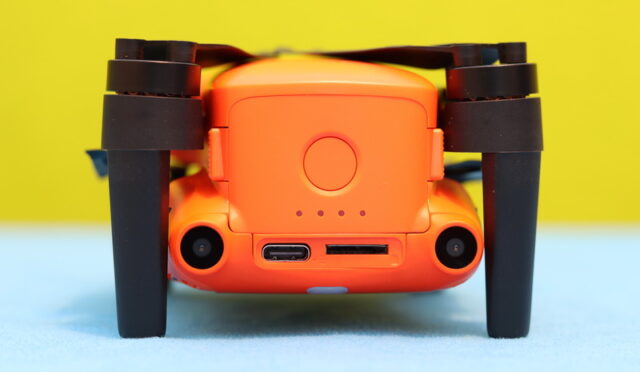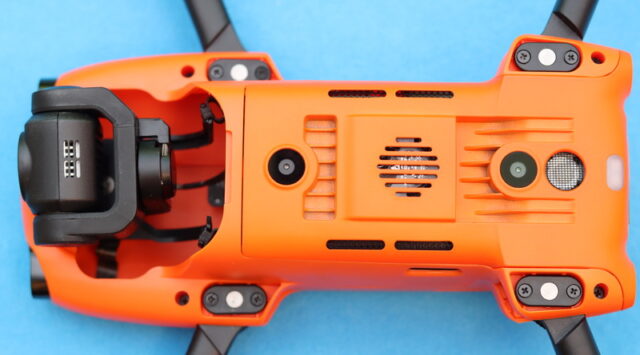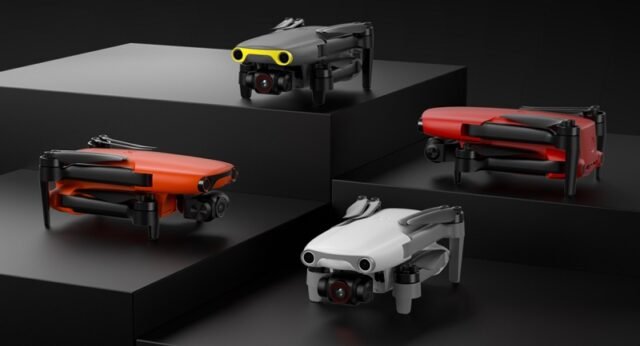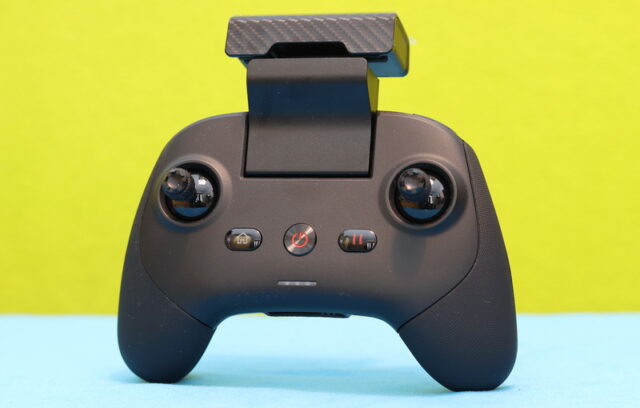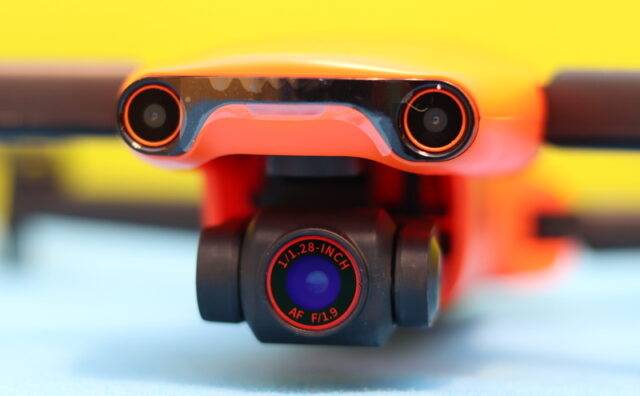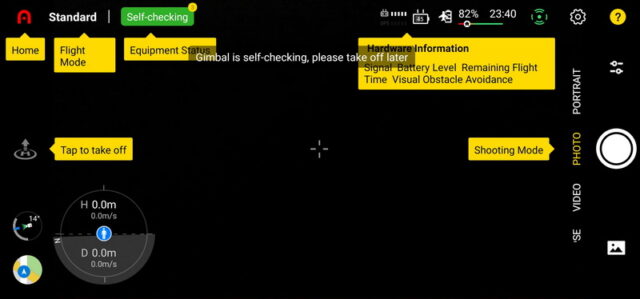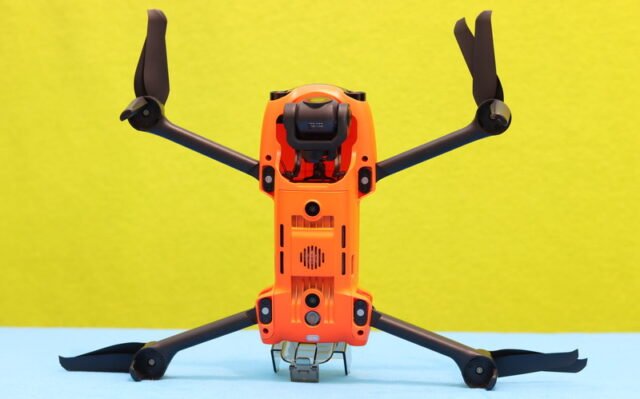
Drone Review: Autel EVO Nano Plus
Summary
Score:4.2
Autel EVO Nano+ is a capable alternative, albeit an expensive one, to DJI’s MINI 2, as it packs several features not available on its contender. But, you will pay a premium for the obstacle avoidance system and the 50MP camera.
The EVO Nano series has a performance close to the DJI Air 2 in a much smaller size and a more friendly price tag.
I found out that not all the advertised features are working right now, but after a couple of firmware upgrades, it has the potential to be pretty incredible in the sub-250 grams class and not only!
Pros
- Travel friendly, weighs just 249 grams;
- 3 direction obstacle avoidance system;
- 4K video and 50MP photo resolutions (JPG+RAW);
- Outstanding FPV quality (2.7K/1080P) and range.
Cons
- Slow speed;
- Many features are only on paper (not yet available);
- Not the best battery life;
- 60fps is available only at 1080p.
User Review
( votes)-
Price/performance ratio:4.0
-
Design and build quality:4.0
-
Intelligent flight modes:4.0
-
Transmitter/Range:4.1
-
Camera:4.1
-
Battery life:4.0
- User experience:4.0
Review: The Autel EVO Nano+ is a solid DJI MINI alternative
Initially, it was about receiving an EVO Nano with a premium bundle pack, but because of low stock, they sent me an EVO Nano+ standard kit with the following accessories: remote controller, USB Type-C charging cable, phone RC data cables (micro USB, Type-C, and Lightning), one set of spare propellers + screws, and user manual. In addition to these, the premium bundle kit includes a power adapter, multi-charger, 2 spare batteries, 2 extra sets of spare propellers, a propeller holder, and a shoulder bag.
Inside the box, the quality check label was filled in on December 30, so it was shipped almost from the production line :)
The EVO Nano series is available with 4 color options, I received the so-called Autel orange. With folded arms measures 142×94×55mm and has a net weight of 249 grams on the scale (including battery, propellers, and microSD card). Thanks to its ultra-compact size, it can be comfortably carried almost anywhere in your backpack or a dedicated case. Its tiny size also makes it quite discreet, making it perfect for capturing the beauty of nature while avoiding disturbing local wildlife.
On the back, under the battery bay, there is the USB Type-C charging port, rear status LED, and micro SD slot. In order to be as lightweight as possible, Autel opted for active cooling instead of an aluminum heat sink. There is a tiny radial fan on the center of the fuselage’s belly.
The EVO Nano Plus features a total of 6 computer vision sensors located on the front, rear, and, bottom for 3D obstacle avoidance. There is also an ultrasonic sensor located on the bottom of the drone for precision hovering.
Autel EVO Nano: Remote controller and range
Initially, I found the Nano’s transmitter quite bulky, especially with that metal phone holder bracket. After a careful inspection, I found out that the top phone clamp doubles as the communications antenna.

The remote controller fits nicely in your hand and it has a good grip. On the front panel, in addition to the two control sticks, there are only 3 buttons (RTH, Power, and Pause) and a status LED bar. The RC has two USB Type-C ports, a bottom for charging and a top for phone data connection.
On the left side, there is a dial knob that allows changing the angle of the camera and an FN button that can be customized through the mobile APP. The camera (photo/video) button is on the right side.
The EVO Nano series supports up to 10 km of video transmission and has excellent anti-interference capabilities, giving you the ability to fly further and see clearer. It is the first drone I reviewed that provides 2.7K for proximity FPV. For over 1KM distances, FPV switches to 1080P. For now, I had only one long-range flight. I got a clear view from 3Km with no problem.
Price, availability, and options
Both Autel EVO Nano+ Standard and Premium packs can be ordered from RCGoing with a starting price of $799.99. For now, they have only the iconic orange version, but soon will be available also Arctic White, Blazing Red, and Deep Space Gray. If you have a tighter budget you can also consider the Nano with 48MP camera for $649.99.
Autel Robotics offers for $79 premium care refresh plan (insurance) that covers water damage and flyaway. Remember that this service can be purchased within the first 48h after the drone was activated.
Autel EVO Nano+: Camera
For such a small drone, the EVO Nano Plus comes with a massive 1/1.28 inch CMOS sensor. It shoots 4K and RAW images, which makes it a very capable camera drone. Its advanced PDAF + CDAF autofocus system can track fast-moving subjects such as vehicles, people, and even animals. The F/1.9 low aperture lens help during low light, without adding too much ISO noise.
Enabling HDR mode, you can squeeze rich detail from shadows and highlights no matter how difficult the lighting condition is. ‘Defog’ mode allows getting a better image quality in rainy or haze environments.
While the EVO Nano+ is advertised with a 50 MP (8192×6144) resolution, I managed to take only 4096×302 (4:3) or 3840×2160 (16:9) photos. It is possible that the 50MP photo mode will be enabled in a future firmware update. It has four panorama modes: Spherical, Wide-angle, Landscape, and Vertical (Portrait).

Videos can be captured with 4K@30fps, 2.7K@30fps, or 1080p@60fps resolution. You can choose between H.264 and H.265 modes (100Mbps max bit rate). The camera provides up to 16x digital zoom, but this works only while recording.
The Autel EVO Nano+ has no internal storage but relies on an SD card which is more convenient as it’s removable and upgradable (up to 256GB is supported / UHS-3 rating required).
Camera specifications
| Image sensor | CMOS:1/1.28 inch Effective pixels:50MP Pixel size: 2.44μm*2.44μm (Bin2) |
| Lens | FOV: 85° Equivalent focal length: 23mm Aperture: f/1.9 Focus range: 0.5m ~ ∞ Focus mode::PDAF+CDAF/MF |
| Shooting mode | Automatic mode (P gear): EV adjustable, ISO/Shutter automatic Manual mode (M gear): ISO/Shutter adjustable, EV not adjustable Shutter priority (S file): Shutter/EV adjustable, ISO automatic |
| ISO range | Video: ISO100 ~ ISO6400 Photo: ISO100 ~ ISO6400 |
| Shutter speed | Photo Mode:1/8000 ~ 8s Other:1/8000 ~ 1/frame rates |
| Portrait blur | Real-time image transmission portrait blur and photo portrait blur |
| Zoom range | Digital zoom:1 ~ 16 times |
| Photo format | JPG(8-bit) / DNG(10-bit) / JPG+DNG |
| Photo resolutions | 50MP:8192×6144(4:3) 12.5MP:4096×3072(4:3) 4K:3840×2160(16:9) |
| Photo shooting mode | Single shot Burst shooting: 3/5 Auto exposure bracketing(AEB): 3/5 shots Interval: 2s/3s/4s/5s (default)/6s/…/60s (DNG minimum 5s) HDR imaging: 3840×2160 |
| Video coding format | H265/H264 |
| Video Resolution | 3840×2160 p30/25/24 2720×1528 p30/25/24 1920×1080 p60/50/48/30/25/24 HDR: 3840×2160 p30/25/24 2720×1528 p30/25/24 1920×1080 p60/50/48/30/25/24 |
| Max bitrate | 100Mbps |
| Timelapse | Original image:3840*2160,JPG/DNG Video:4K P25 |
| Panorama | Horizontal/Vertical/Wide-angle/Spherical Original image: 4096*3072, JPG/DNG |
| WiFi transfer | 20MB/s |
Cinematic shots are built into the Autel Nano+ drone in order to help you quickly produce Hollywood-style clips. Rocket, Fade Away, Orbit, and Flick are the four modes that are also offered by its bigger and almost twice more expensive brother the Autel EVO Lite. By comparison, DJI MINI 2’s QuickShoot modes include Dronie, Helix, Rocket, Circle, and Boomerang. The ‘Flick’ mode is different from anything else I tested before. It starts recording from the back of the subject and, making a 180° turn, it goes in front of the subject.
User experience
After I activated the drone, APP prompted that I need to upgrade the firmware. While I read some complaints that the process took close to 50 minutes, it finished two times faster. the process is straightforward even for first-time users.
With care, this little drone can be flown straight off the hand and landed in the same way. Nice thing if you want to start your flights on difficult terrains. It’s like a feather in the air, so it is not recommended to fly at a wind speed higher than 24 mph (38km/h). You should take into consideration that wind speed is increased at higher flight altitudes.
As it supports all 3 major satellite providers (GPS, GLONASS, and Galileo), it searches GPS super fast. It has 3 flight modes: Smooth, Standard, and Sport. At the fastest rate, the obstacle avoidance system is disabled!
Its intelligent flight mode allows performing a series of actions and movements autonomously, so you keep all the attention on the photo/video and can regain control at any time.

Below -10°C the gimbal motors do not perform too well. The footage has jello, making the videos unusable. Maybe I’m too optimistic, but I hope this issue can be fixed by a firmware upgrade.
The drone can be used with the included remote control, but to take advantage of its advanced features you will need a smartphone running the new Autel Sky application. In addition to providing live video feedback of what the drone sees, this app allows you to configure the drone, capture photos, and movies, and even share them on social media (not active yet). Its file transfer feature downloads data to your smartphone at a speed of 20 Mb/s.
When an obstacle is detected in front of the drone (nose), a red line appears on top of the screen, respectively at the bottom, when the obstacle is behind the aircraft (tail). The estimated distance to the obstacle is also displayed.
Despite the fact that the EVO Nano series is advertised by Autel with Active Tracking, I didn’t find this feature in the AutelSky APP. Checking their website I found out that this feature will be released in a future firmware update.
